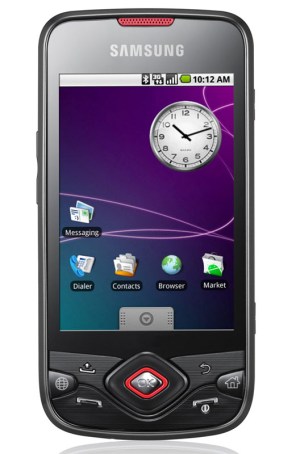
South Korean electronics giant Samsung has officially unveiled the Samsung Galaxy Spica I5700, a new Android smartphone packing a fast processor, big screen, high-resolution camera, and Google’s Android mobile operating system. But rather than targeting the North American market, Samsung plans to push the Galaxy Spica into Europe, CIS, and Middle East/Africa markets.
“Samsung has made a great effort to strengthen our smartphone line up with a wide range of innovative products for every user,” said Samsung Electronics mobile communications executive VP JK Shin, in a statement. “The Samsung Galaxy Spica, powered by Android, is the perfect fit for users who want to enjoy a powerful and fast mobile experience”, he added.
The Galaxy Spica follows up on Samsung’s Android-running Galaxy I7500 phone, and features a 3.2-inch capacitive touchscreen display, integrated GPS, Wi-Fi and Bluetooth wireless networking, a 3.2 megapixel camera, and a speedy 800 MHz processor. Compared the Galaxy, the processor is snappier, but the camera is a bit lower-resolution: the original Galaxy packs a 5 megapixel camera. However, the extra processor cycles also make the Galaxy Spica the first Android phone that can handle DivX-format video. However, the Galaxy Spica also runs Android 1.5 (“Cupcake”) versus version 2.0 on the current swath of Android phones like the Droid.
Right now, Samsung plans only to market the Galaxy Spica in Europe and CIS nations, with the Middle East and Africa coming later. No information about a North American release is available, and Samsung has not released any pricing plans.

Editors' Recommendations
- Samsung Galaxy Ring: news, rumored price, release date, and more
- Flash sale gets you this iPad Mini-sized Samsung tablet for $99
- How to use iMessage on an Android phone or tablet
- Best phone deals: Save on the iPhone, Galaxy Z Fold 5, and more
- The 20 best Samsung Galaxy Watch faces you should be using


